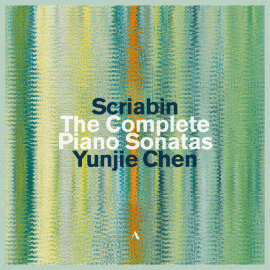Mittlerweile legt Nicolas Bacri beim Komponieren seinen Fokus auf die schönsten Aspekte, die es erlauben, das tonale System weiter zu nutzen, ohne sich einengen zu lassen. Er sucht die Abkehr vom tonalen System unter Beibehaltung von Dissonanz und Modulation, womit er seine melodiegeprägten Werke ausformt. Komponieren ist für ihn Prozess und nicht Sucht. Dabei führt ihn die Sorgfalt, die er auf Prägnanz, Klarheit thematischer Ideen und formale Strukturen legt. Eine kompositorische Nähe zu bestimmten Vorbildern negiert er.
Auf diesem ersten Album einer Reihe mit seiner Kammermusik wird die Flöte in originalen oder adaptierten Werken vorgestellt. Sie ist für Bacri das Instrument der Träume. Die Sonata da camera und die Sonata notturna entstanden ursprünglich schon vor einigen Jahrzehnten, also in seinen jungen Jahren. Die anderen Werke sind jüngeren Datums.
Die in klassischer Form aufgebaute Sonata da camera basiert auf einem das ganze Werk durchziehenden jugendlichen sanften Thema.
Die Sonata Notturna hat den Charakter eines Zwillings zur Zweiten Sonate für Violine solo, da es die mögliche Vielfalt der Entwicklung desselben Materials zeigt. In der Stimmung ist von Bacris Lieblingsthema, der Nacht, geprägt.
Die zwölf Monologues Pascaliens schuf er als Zwischenspiele für Alice im Wunderland für Soloflöte. Nur scheinbar einfach fordern sie technisch und musikalisch heraus. Auch die spätere Triofassung stellt die französische Tradition des Flötenspiels dar.
Die Frühlingssonate sondiert wie bei der Violinsonate in Anlehnung an Brahms die Möglichkeit, in eine tonale Orientierung hinein die Diatonik einzubeziehen. Erkundet wird das Auftauchen der Moderne in der Tradition und umgekehrt. Doch auch der titelgebende Aspekt bleibt erhalten, eine sich zur Blüte entfaltende Knospe durch Klänge zu zeigen.
Die Flötistin Danielle Breisach hat für ihre Promotion französische Flötenmusik gewählt, da sie die emotionale Kapazität als unendlich weitreichend empfindet. Dabei entdeckte sie auch Nicolas Bacri, der für sie ihre musikalische Sprache spricht. Die eingebetteten Emotionen und die erforderliche Flexibilität, um seine Musik auszuführen, sind prägend. Die jetzt umgesetzte Aufnahme zeigt Breisach als eine äußerst versierte Flötistin. Ihre intensive Beschäftigung mit diesen Werken zeitigt jetzt den Erfolg der tiefgehenden Auseinandersetzung und mündet in stilistisch prägnant und musikalisch feinsinnig ausgestaltete Darbietungen.
Ihre Begleiter, die Pianistin Yana Avedyan, auch sonst ihre Duopartnerin, und Cellist Andrew Briggs komplettieren das dieser Musik so zugewandte Interpretieren in exzellenter Weise. Die Texte im Begleitheft geben viele Informationen zu den Aspekten den Werken. So liegt ein sehr gelungener Einstieg in die Reihe mit Kammermusikwerken von Bacri vor.
Nicolas Bacri now focuses on the most beautiful aspects of his compositions, which allow him to continue using the tonal system without being restricted by it. He seeks to move away from the tonal system while retaining dissonance and modulation, which he uses to shape his melody-driven works. For him, composing is a process and not an addiction. He is guided by the care he places on conciseness, clarity of thematic ideas and formal structures. He negates any compositional proximity to specific role models.
On this first album in a series of his chamber music, the flute is presented in original or adapted works. For Bacri, it is the instrument of dreams. The Sonata da camera and the Sonata notturna were originally composed several decades ago, in his younger years. The other works are more recent.
The Sonata da camera, constructed in classical form, is based on a youthful, gentle theme that runs through the entire work.
The Sonata Notturna has the character of a twin to the Second Sonata for solo violin, as it shows the possible variety of development of the same material. The mood is characterized by Bacri’s favorite theme, the night.
He created the twelve Monologues Pascaliens as interludes for Alice in Wonderland for solo flute. Only seemingly simple, they are technically and musically challenging. The later trio version also represents the French tradition of flute playing.
As with the violin sonata, the spring sonata explores the possibility of incorporating diatonicism into a tonal orientation, following Brahms. It explores the emergence of modernity in tradition and vice versa. However, the aspect that gives the work its title also remains intact, showing a bud unfolding into blossom through sounds.
Flutist Danielle Breisach chose French flute music for her doctorate because she finds its emotional capacity to be infinitely far-reaching. In the process, she also discovered Nicolas Bacri, who speaks her musical language for her. The embedded emotions and the flexibility required to perform his music are formative. This recording shows Breisach to be an extremely accomplished flautist. Her intensive study of these works now yields the success of her in-depth exploration and results in stylistically concise and musically subtle performances.
Her accompanists, pianist Yana Avedyan, who is usually her duo partner, and cellist Andrew Briggs complete the interpretation of this music in an excellent manner. The texts in the accompanying booklet provide much information on the aspects of the works. So, this is a very successful introduction to the series of chamber music works by Bacri.





















